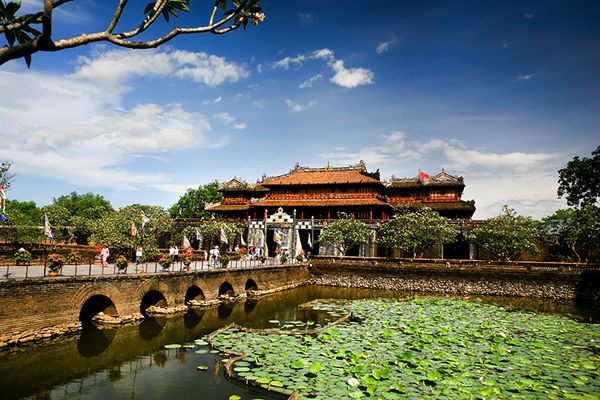Hue (Huế) is in the central region of Vietnam and is the former imperial capital.

Hue is intimately connected to the imperial Nguyễn Dynasty, based in Hue, who ruled from 1802 to 1945, when the Emperor Bao Dai abdicated in favor of Ho Chi Minh’s revolutionary government. The city went through tough times during the Vietnam War, when it was conquered by the Viet Cong and held for 24 days, during which the VC slaughtered around 3,000 people suspected of sympathizing with the South, being a highschool graduate or Christian. In retaking the city American forces initially didn’t use artillery or air support to avoid damaging ancient buildings but due to heavy casualties these restrictions were relaxed and the city largely destroyed.
Hue is easy to get a grip on. The main landmark is the Perfume River (Hương Giang), with the old city and the Citadel on the north side and the newer city, including most hotels and restaurants, on the south side. Much of the riverside has wisely been done up as a pleasant promenade and park dotted with bizarre sculptures. The tombs are located further south in the outskirts of Hue.
Climate
Hue’s weather is infamously bad: the Truong Son Mountains just to the south seem to bottle up all the moisture, so it’s usually misty, drizzly or outright rainy. Things get even wetter than usual in the winter rainy season, especially from February to the end of March. To be safe, bring along an umbrella any time of year. Don’t forget to bring a sweater and jacket in winter as it can get rather chilly, with temperatures falling to as low as 8 degrees at night. Alternatively, when the sun makes an appearance for a day or a week, it can reach 30 degrees.
It’s usually quite dry during the summer months, when the temperature can reach the high 30’s. Summer rains can be heavy but brief, and often arrive unexpectedly, whereas February rains can last for weeks. The best description for the weather in Hue would be “changeable”.

